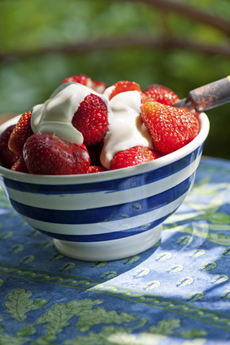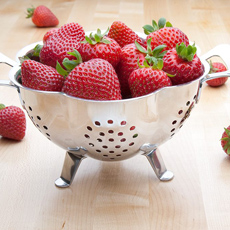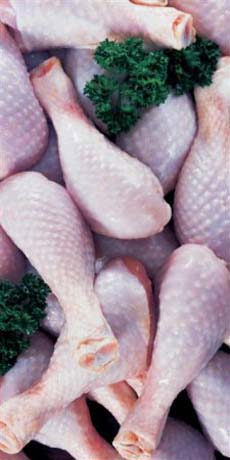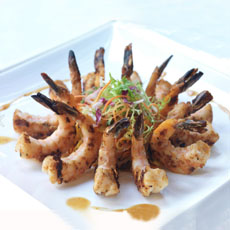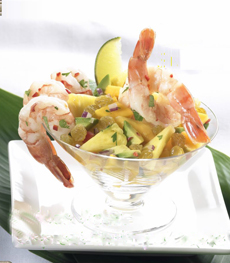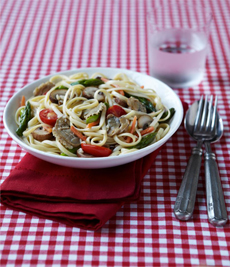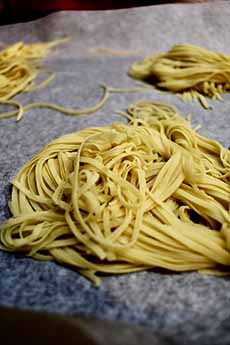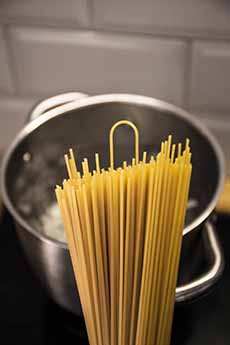|
Before asparagus season ends, get your fill by adding it to your favorite dishes.
Here’s an example of how easy it is, courtesy of Dole, which adds its fresh asparagus to the classic pasta dish, linguine with clam sauce.
Consider using whole wheat linguine for fiber and flavor. If asparagus season has passed, add green beans or snow peas.
This recipe makes 4 servings; prep time 10 minutes; cook time 25 minutes.
Speaking of linguine (lin-GWEE-nay)…Americans often misspell it linguini.
Show you’re a food connoisseur and use the original Italian!
Originating in the Liguria, the costal region of northern Italy (capital Genoa), linguine is a narrow, flat version of round spaghetti (it is sometimes referred to as flat spaghetti).
It’s a narrower version of another popular flat ribbon pasta, fettuccine.
September 15th is National Linguine Day.
> The history of linguine is below.
> The history of pasta.
> Check out the different types of pasta in our Pasta Glossary.
RECIPE: LINGUINE & CLAM SAUCE WITH ASPARAGUS
If asparagus is out of season, use broccoli florets.
Ingredients
8 ounces linguine
1 tablespoon olive oil
1 package (8 ounces) sliced mushrooms
2 teaspoons minced garlic
½ teaspoon salt
½ teaspoon freshly ground black pepper
1 pound asparagus, trimmed of woody ends and chopped into 2” pieces
1 cup shredded carrots
1 cup grape tomatoes, halved
1 can (10 ounces) whole baby clams, drained (juice reserved)
Preparation
1. BRING a large pot of water to a boil. Cook linguine according to manufacturer’s instructions. Meanwhile…
2. HEAT the oil in a large nonstick skillet over medium-high heat. Add the mushrooms, garlic, salt and pepper. Cook for 5 minutes until mushrooms begin to brown.
3. ADD the asparagus, carrots and two tablespoons of water. Toss to combine and cover skillet. Cook 4 minutes longer.
4. ADD the tomatoes and the clam juice. Cook uncovered 1 minute longer. If the pasta is not yet cooked, remove vegetables and clams from heat and cook pasta until it is al dente.
5. DRAIN pasta and add to the vegetable mixture along with the reserved clams. Raise heat to high and cook 2-3 minutes longer until pasta is thoroughly coated and most of the liquid is absorbed.
6. PLATE and serve.
LINGUINE vs. SPAGHETTI vs. FETTUCCINE
Do you know the difference between popular pasta cuts and shapes?
Linguine is a flat ribbon, a narrower version of fettuccine (or, fettuccine is wider linguine.
Spaghetti is a round ribbon pasta, thin like linguine. Bucatini is a thick round ribbon with a hole in the center (like a sipping straw).
There are hundreds of pasta shapes in Italy—estimates range from 350 to as many as 600. Some are very similar, but with different names because they originated in different regions, in the days before mass communications could get the word out.
|
